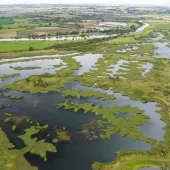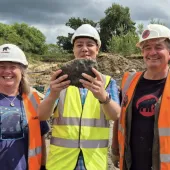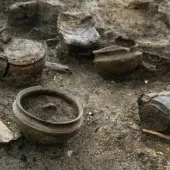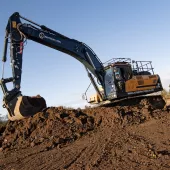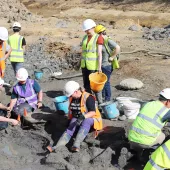The Palaeolithic Of The Trent Valley Gravels
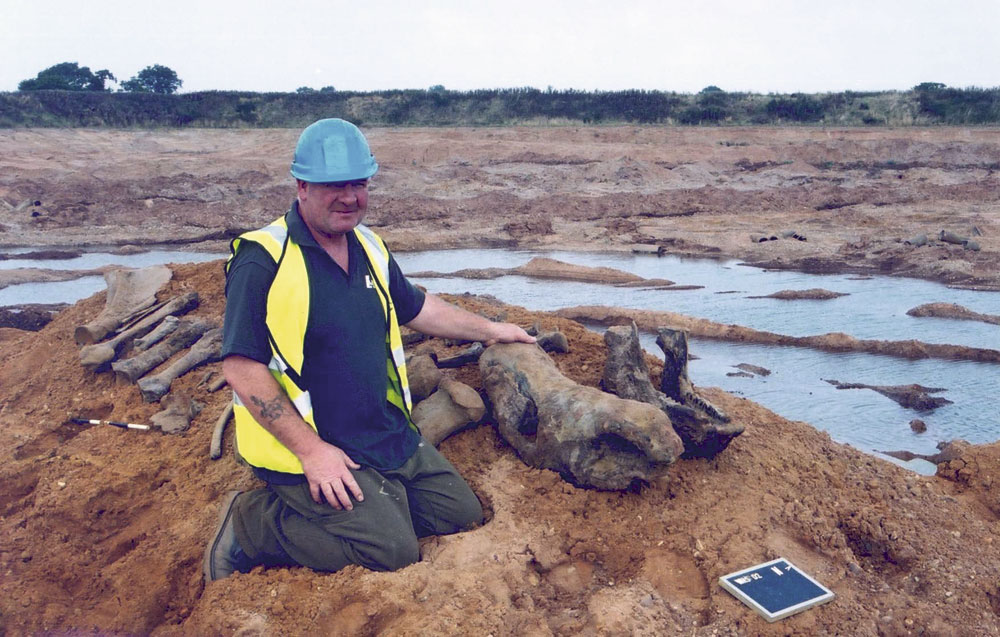
by Andy J. Howard, The Institute of Archaeology & Antiquity, The University of Birmingham
Over the last 400,000 years, the river Trent and its ancestral predecessors have laid down great thicknesses of sand and gravel under a variety of warm and cold climatic regimes. Today, these long-abandoned gravel floodplains form altitudinally distinct terrace surfaces within the landscape and provide evidence of former courses, including ancestral routes to the North Sea via Lincoln and the Witham Valley. Quarrying of these deposits has led to the discovery of significant post-glacial archaeology, such as Bronze Age log boats at Shardlow in Derbyshire, Roman settlements at Rampton in north Nottinghamshire and medieval bridges at Hemington in Leicestershire. All these examples relate to the last 10,000 years of human activity and have been recorded through traditional archaeological excavation, which attracts a great deal of media and public interest. Less well known, however, is the evidence that some of these quarries have yielded for early human (Palaeolithic) activity and the environments in which they lived and hunted. This evidence is usually recovered by casual observation of the quarry floor or working gravel faces and rarely impedes production.
The majority of our evidence for the earliest human occupation of the Trent Valley comes from hand axes collected in the early to mid-20th Century from the now disused gravel pits around Hilton and Etwall in Derbyshire and Beeston near Nottingham. These hand axes and associated stone tools, which form the bulk of the 400 or so artefacts held in museum collections, are usually made from flint or the local quartzite pebbles that form the majority of the gravel resource (fig. 1).
Recent reassessment of these museum collections, funded by a grant from the Aggregate Levy Sustainability Fund, has led to the observation that the majority of these stone tools are heavily rolled, suggesting that they have been moved and reworked from the place where they were initially discarded, perhaps a temporary hunting camp or the site where an animal was killed and butchered by the side of the river. Such observations have clear and positive benefits for the quarrying industry as they indicate that in-situ primary occupation sites are unlikely to be discovered in deposits where these rolled artefacts have been recorded, and that the best way to prospect for the artefacts which may be present is through casual observation of the quarry faces and quarry floor.
As well as stone tools, these deposits have also yielded the remains of plants, beetles and large mammals, which help us to reconstruct both the climate and the food resources available for our ancestors. Perhaps one of the most spectacular finds in recent years was the discovery of the remains of three woolly rhinoceri from Whitemoor Haye Quarry, Staffordshire, in the tributary valley of the river Tame (fig. 2). These beasts, which roamed across the floodplain around 30,000 years ago when the environment was more akin to present day northern Norway, appear to have died naturally, but would have presented challenging hunting for our ancestors. Such finds capture the public imagination and, in the case of Whitemoor Haye, have resulted in worldwide publicity, including a live link to the BBC One O’Clock News while production of aggregates continued unimpeded elsewhere in the quarry. Clearly, in the Trent Valley over a century of close collaboration between the aggregates industry and Ice Age specialists has led to some spectacular discoveries, which serve to demonstrate the long history and solid foundations of this mutually beneficial partnership.


